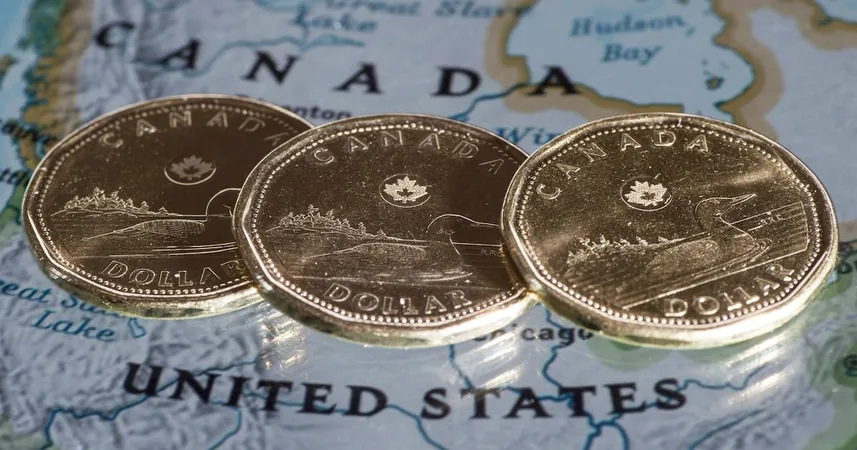
Loonie Plummets to 2020 Lows: How Trump's Tariff Threats Could Shatter Canadian Trade!
2024-11-26
Author: Jacob
The Canadian dollar, affectionately known as the loonie, has nosedived to its lowest value since May 2020, largely in response to former President Donald Trump's recent threats to impose hefty tariffs on Canadian goods entering the United States, set to take effect once he resumes office in January.
Trading at approximately 71.01 cents U.S. in the early afternoon, the loonie dipped below the 71-cent mark earlier in the day, indicating continued pressure in the market. BMO Capital Markets' senior economist, Robert Kavcic, pointed out that this potential tariff implementation is creating a substantial headwind for the loonie, which has already been facing downward pressure due to various domestic economic challenges.
"The currency has been battered by a softening Canadian economy and several interest rate cuts from the Bank of Canada," Kavcic explained. In fact, the central bank has slashed its benchmark interest rate four times this year, including a significant half-percentage point cut in October, which brought the rate down to 3.75%. This move signals a shift in focus from fighting inflation to fostering economic growth.
In a recent post on Truth Social, Trump boldly declared he would impose a 25% tariff on all products from Canada and Mexico, with the condition that both countries must effectively combat drug trafficking—particularly fentanyl—and illegal immigration across borders. However, analysts caution that Trump's social media announcement does not constitute official U.S. government policy and that any such tariffs, if enacted, may be temporary and conditional.
Market strategist Karl Schamotta from Corpay noted that investor sentiments suggest skepticism around Trump's commitment to these tariffs. "Canadian Prime Minister Justin Trudeau has already demonstrated tendencies to accommodate Trump’s negotiations, implying that this announcement might just be a starting point in negotiations rather than a definitive policy change," Schamotta stated.
While a weaker loonie could mean higher costs for Canadians indulging in Black Friday cross-border shopping, it simultaneously makes Canadian exports more attractive to U.S. consumers, somewhat balancing out the financial impact of the proposed tariffs. Furthermore, certain sectors, most notably the energy and automotive industries, might see exemptions given their integrated supply chains and dependence on cross-border trade. Kavcic has pointed out that the energy sector, for example, lacks alternatives for replacing substantial volumes of production, making blanket tariffs illogical.
Given these complex dynamics, many analysts believe there could be a modest recovery for the Canadian dollar as the situation unfolds and investors reassess the trade outlook. While the looming uncertainty poses risks, the intricacies of economic relationships between Canada and the U.S. might prompt more nuanced decisions regarding tariffs and trade policy as 2024 approaches. Stay tuned for more updates on this developing story!









 Brasil (PT)
Brasil (PT)
 Canada (EN)
Canada (EN)
 Chile (ES)
Chile (ES)
 España (ES)
España (ES)
 France (FR)
France (FR)
 Hong Kong (EN)
Hong Kong (EN)
 Italia (IT)
Italia (IT)
 日本 (JA)
日本 (JA)
 Magyarország (HU)
Magyarország (HU)
 Norge (NO)
Norge (NO)
 Polska (PL)
Polska (PL)
 Schweiz (DE)
Schweiz (DE)
 Singapore (EN)
Singapore (EN)
 Sverige (SV)
Sverige (SV)
 Suomi (FI)
Suomi (FI)
 Türkiye (TR)
Türkiye (TR)